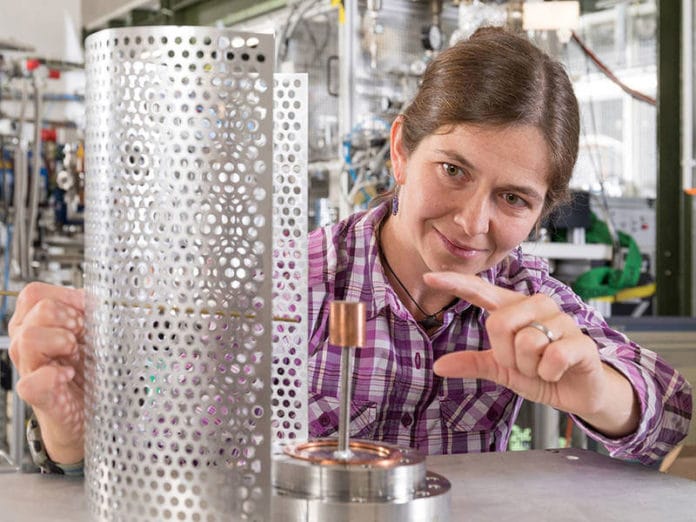Positron, also called positive electron, positively charged subatomic particle having the same mass and magnitude of charge as the electron and constituting the antiparticle of a negative electron. When a positron hits an electron, both instantly annihilate in a flash of light. And since there are electrons in abundance everywhere on Earth, it is extremely difficult to store positrons in such a way that they survive for at least a while.
Now, scientists from the Technical University of Munich (TUM) and the Max Planck Institute for Plasma Physics (IPP) have succeeded in losslessly guiding positrons. This discovery could pave the way towards creating a matter-antimatter plasma of electrons and positrons, like the plasmas believed to occur near neutron stars and black holes.
Dr. Eve Stenson, who presented her research in an interview said, “Being able to capture and confine positrons is fundamental for studying what is known as electron-positron pair plasma. Such plasmas are of great interest both for the investigation of fundamental questions in plasma physics as well as in astrophysics.”
“Fortunately, we have the most powerful positron source in the world, NEPOMUC (neutron-induced positron source Munich), here in Garching, north of Munich, at the Research-Neutronsource Heinz Maier-Leibnitz (FRM II). It can produce 900 million positrons per second.”
To trap positrons into a magnetic trap (very similar to that of the Earth or other celestial bodies), scientists applied an electrical voltage to the edge of the trap to guide the positrons through the magnetic bars. They then switched the voltage off again, thus the positrons remain trapped in the cage for a little more than a second.
Stenson said, “It worked so well, even we were surprised.”
She further added, “The aim of the APEX (A Positron-Electron Experiment) Group at the Max Planck Institute for Plasma Physics is to produce a matter-antimatter plasma of electrons and positrons and to confine that plasma in a magnetic cage. The first step, however, is to be able to produce and store enough positrons. The next step is to actually create and examine such plasmas.”
References:
- Lossless Positron Injection into a Magnetic Dipole Trap.
- Confinement of Positrons Exceeding 1 s in a Supported Magnetic Dipole Trap.
